A rapid series of loud ha-ha-ha-haah-haah commands attention on the beach. It’s not rowdy beachgoers enjoying a fun story, it’s the clatter of the laughing gull, so tagged because its noisy vocalization sounds like human laughter. A happy bird? Perhaps. Certainly, a gregarious one.
Laughing gulls are social, intelligent, inventive, opportunistic and adaptable — and not shy about getting food, whether wading in the water, scurrying along the beach, stealing from other shore birds, each other or nagging humans on the beach until they share their snacks. A tossed morsel is swiftly caught mid-air.
The laughing gull is a good-looking sea bird of medium size with a wingspan of 36 to 47 inches. They generally outnumber other shore bird species at the seashore. In summer plumage, the colors are sharply defined: coal black head, slate-gray uppers, pure white underparts and black legs. White crescent marks are above and below the eye. Small white dots tip out the black outer primary wingtips. The deep red beak is the ultimate identifier – and the head-thrown-back raucous laugh. In winter, the black hood is more like a gray mask.
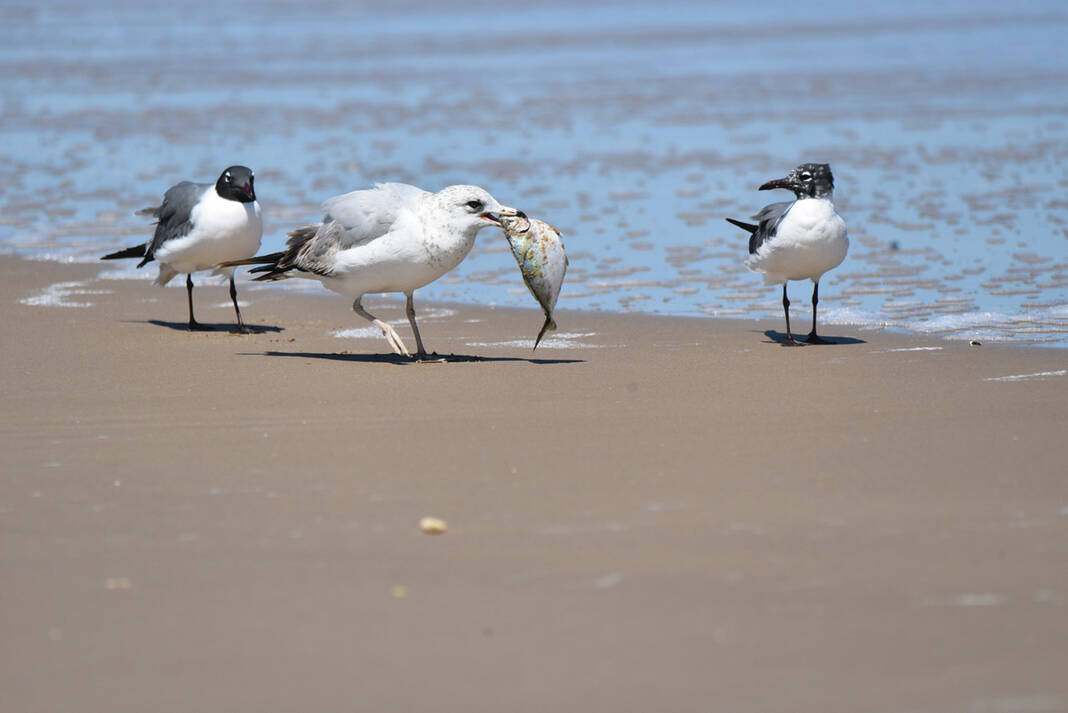 Opportunistic laughing gulls check out a fresh catch. (Courtesy: Anita Westervelt)
Opportunistic laughing gulls check out a fresh catch. (Courtesy: Anita Westervelt)Warm-loving coastal birds, laughing gulls are found along beaches of the Atlantic and Gulf Coasts of North America, the Caribbean and northern South America. Their natural and healthy diet is mainly fish, shellfish, crabs, mollusks, insects, berries, garbage, refuse and carrion. They forage plowed agricultural fields near the coast looking for grubs; they rarely travel far inland.
Recently, local media carried stories of unusual creatures being tossed ashore by wind and tides. Species like by-the-wind sailor were left stranded and now are carcasses along the wrack line, like so much drift, providing laughing gulls with optional treats.
The attentive laughing gulls have learned the ways of beachgoers and will eat just about anything they can steal or cadge as handouts. They frequent parking lots, scrounging for foods left by humans. That said, nutritionally inferior foods like bread, packaged, processed and cast-off fast foods may do a disservice to the gulls, potentially causing long-term health problems.
There are several collective nouns for gulls, like a squabble of gulls, or a gullery; laughing gulls are a guffaw.
While a small guffaw of laughing gulls hectored a family eating their lunch at the beach, a lone ring-billed gull successfully fished the shallows where it snagged a young Atlantic bumper fish and hauled it to the sand. Winter ring-billed gull markings are a brown streaked head. Adult plumage is a pure white head and underparts and soft gray upper wings and back; these gulls have a yellow bill with a black subterminal band.
As the activity on the sand progressed, two royal terns kept a slow glide overhead, up and down the beach, high above the incoming tide, ready to plunge-dive for small fish just below the water’s surface. Terns are in the same order as gulls although sleeker with thinner, sharper, daggerlike orange bills. In spring and summer, royal terns have a black crown from bill to nape.
The beach offers lively entertainment, especially during April migration.
All About Birds, National Audubon Society and American Bird Conservancy websites and seabrookislandbirders.org, animalia.bio/laughing-gull and houstonaudubon.org were helpful in writing this article.
Anita Westervelt is a Texas Master Naturalist.
The post Raucous laughing gulls: Timeless soundtrack for a day at the beach appeared first on MyRGV.com.
 (2).png)
 2 weeks ago
63
2 weeks ago
63
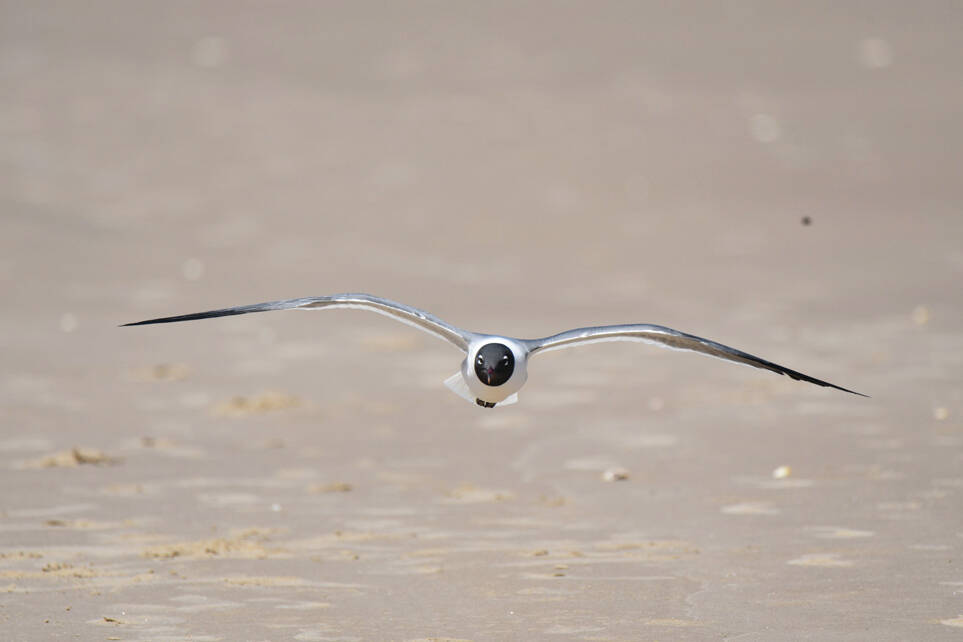
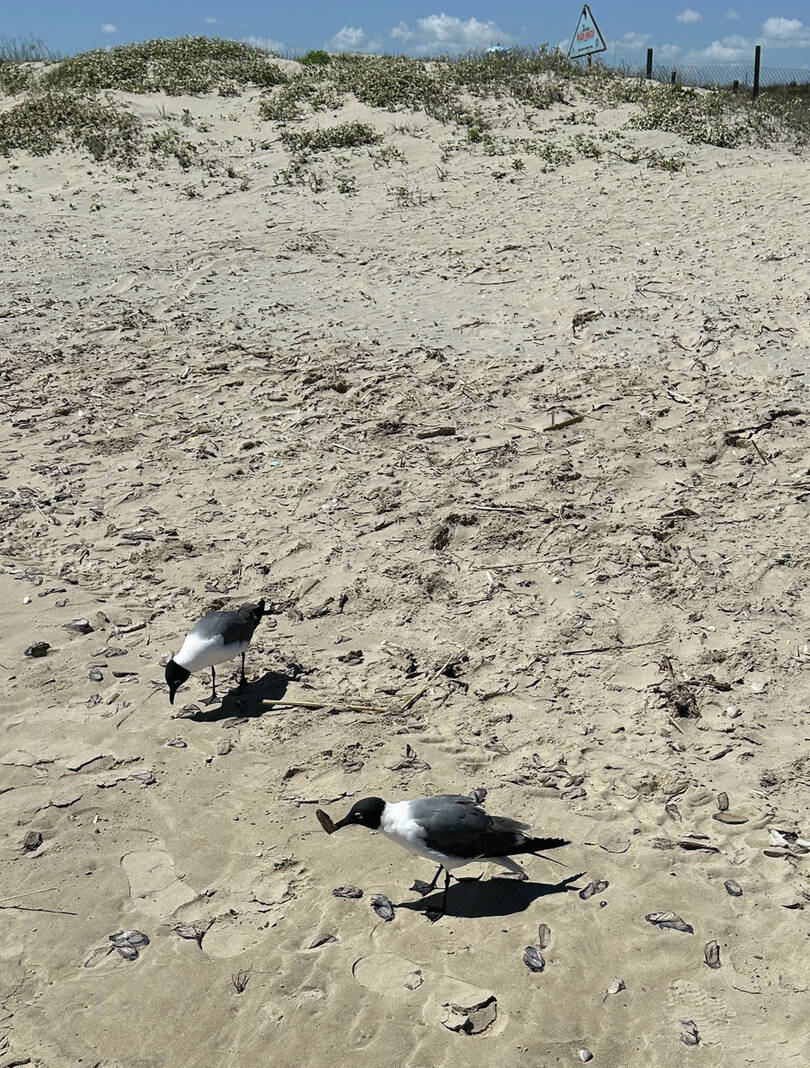
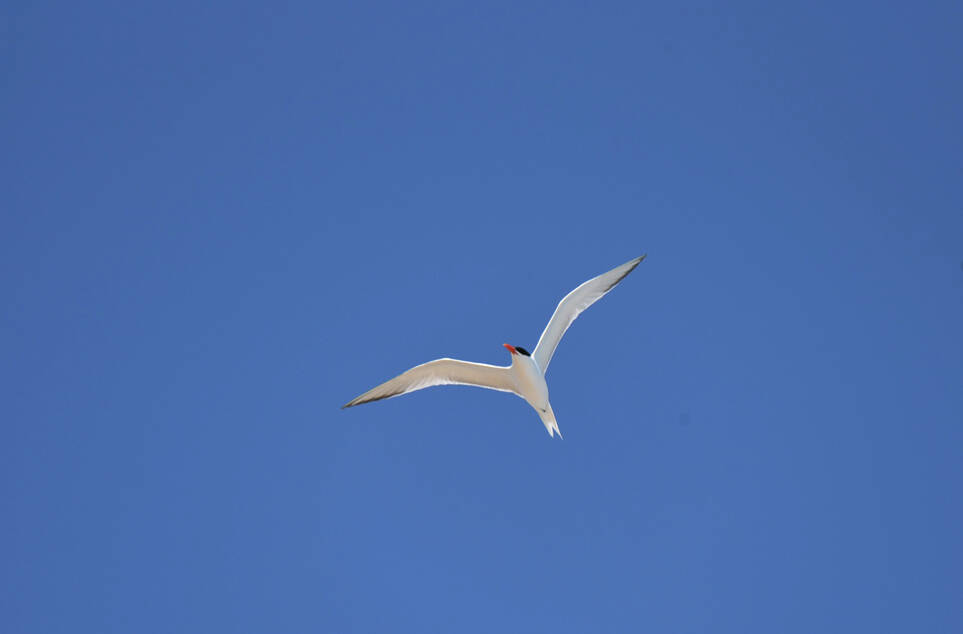
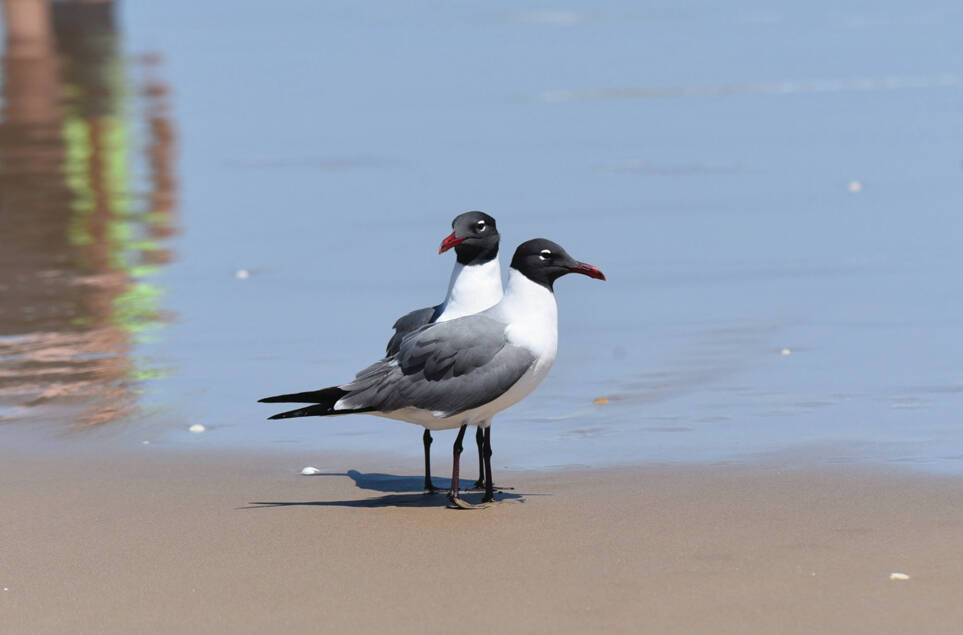
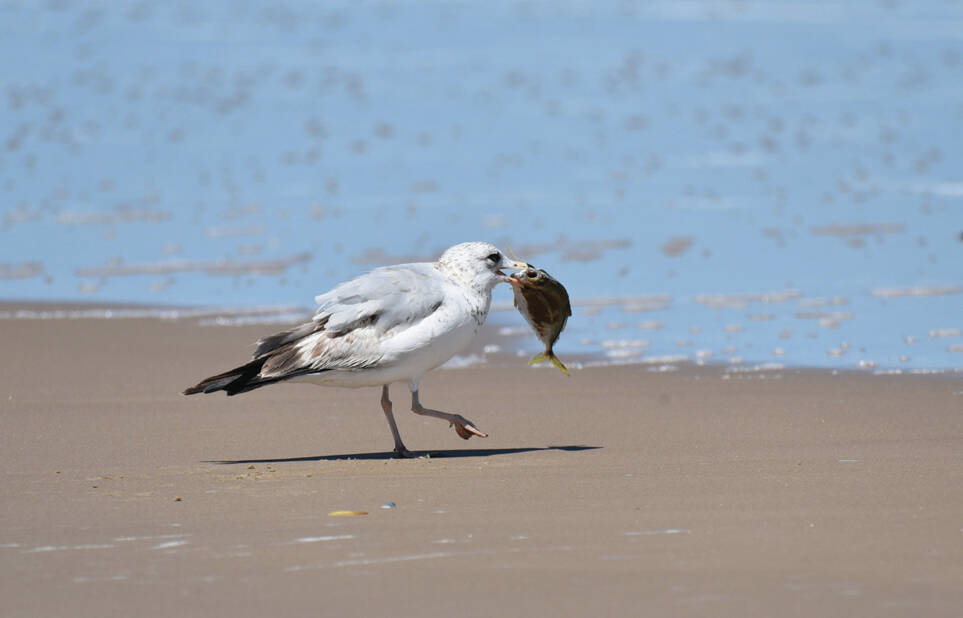
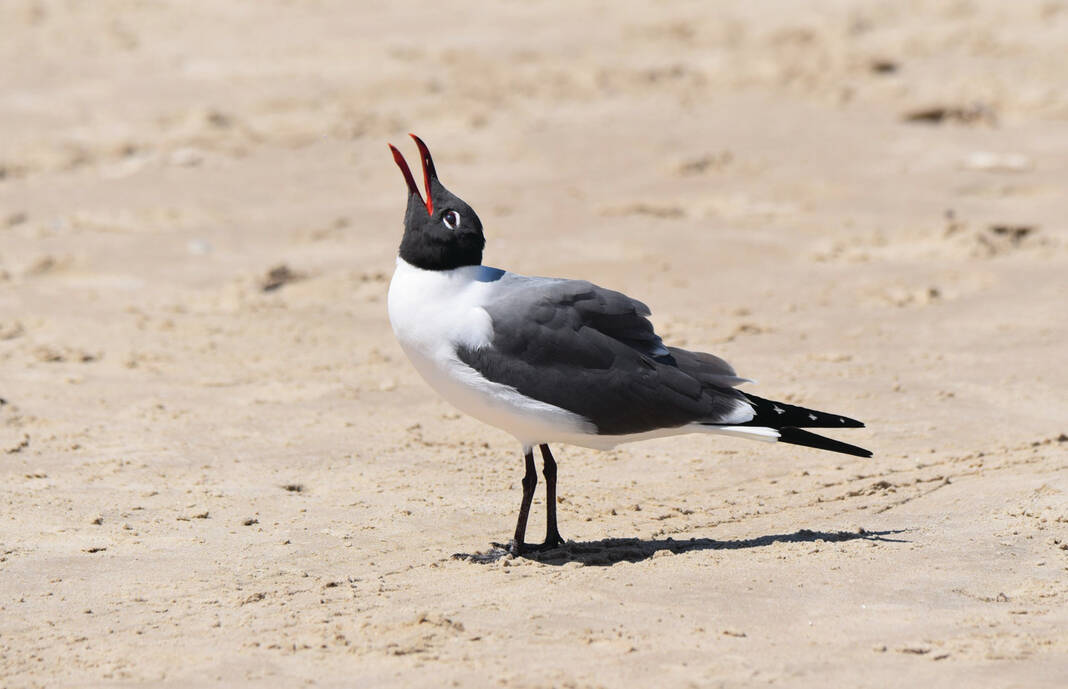








 English (US)
English (US)